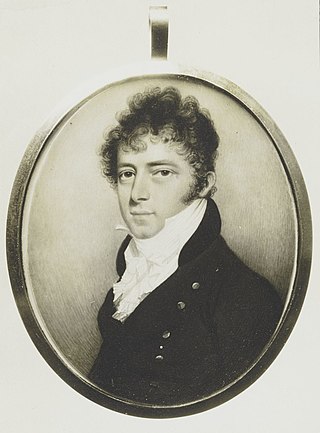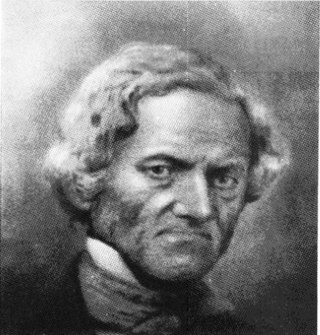
Aaron Burr Jr. was an American politician, businessman, lawyer, and Founding Father who served as the third vice president of the United States from 1801 to 1805 during Thomas Jefferson's first presidential term. He founded the Manhattan Company on September 1, 1799. Burr is remembered for his famous personal and political conflict with Alexander Hamilton, which culminated in the Burr–Hamilton duel in Weehawken, New Jersey on July 11, 1804. Burr mortally wounded Hamilton, who died from his wounds the following day.

Anya Seton, born Ann Seton, was an American author of historical fiction, or as she preferred they be called, "biographical novels".

Burr: A Novel is a 1973 historical novel by Gore Vidal that challenges the traditional Founding Fathers iconography of United States history, by means of a narrative that includes a fictional memoir by Aaron Burr, in representing the people, politics, and events of the U.S. in the early 19th century. It was a finalist for the National Book Award in 1974.

Aaron Burr Sr. was a notable Presbyterian minister and college educator in colonial America. He was a founder of the College of New Jersey and the father of Aaron Burr (1756–1836), the third vice president of the United States.

Theodosia Burr Alston was an American socialite and the daughter of the third U.S. Vice President, Aaron Burr, and Theodosia Bartow Prevost. Her husband, Joseph Alston, was governor of South Carolina during the War of 1812. She was lost at sea at age 29.

Joseph Alston was the 44th Governor of South Carolina from 1812 to 1814.
James Marcus or Mark Prevost was a British Army officer. After being commissioned in Europe, he commanded troops of the British Army in North America and the West Indies, including during the French and Indian War, the North American front of the Seven Years' War.

The Grave of the Female Stranger is a famous historical oddity, local landmark and visitor's attraction in St. Paul's Cemetery of St Paul's Episcopal Church in Alexandria, Virginia.

Leonora Sansay was an American novelist. She was the author of Secret History; or, The Horrors of St. Domingo, in a Series of Letters Written by a Lady at Cape Francois to Col. Burr, late Vice-President of the United States, Principally During the Command of General Rochambeau and Laura, and possibly three other novels: Zelica: The Creole ; The Scarlet Handkerchief ; and The Stranger in Mexico.
Richard N. Côté was an American author, social historian, and lecturer. His work included research in Wisconsin and four years researching for the South Carolina Historical Society in the late 1970s to early 1980s. From 1999 to 2002 he published three well-received biographies, of Theodosia Burr Alston, Dolley Madison, and Mary Motte Alston Pringle. Côté was born in Connecticut and attended Butler University. He served in the United States Air Force for six years after graduation.

The Hearth and Eagle is a historical novel by Anya Seton. Set primarily in the old New England fishing village of Marblehead, Massachusetts, the story centers on strong-willed, passionate Hesper Honeywood and her search for love and fulfillment at a time when women had few options and the stormy Atlantic often claimed the lives of poor fishermen. Seton started researching her ancestors in the mid-1940s, which led her to Marblehead and the setting for her fourth novel.

John Pierre Burr was an American abolitionist and community leader in Philadelphia, Pennsylvania, active in education and civil rights for African Americans. He was an illegitimate child of Aaron Burr, the third U.S. vice president, and Mary Emmons, a Haitian governess who may have been born in Calcutta, India.

Theodosia Bartow Burr, previously known as Theodosia Bartow Prevost, was an American Patriot. Raised by a widowed mother, she married British Army officer Jacques Marcus Prevost at age 17. After the American Revolution began, her own Patriot leanings led her to offer the use of her house, the Hermitage, as a meeting- and resting-place for revolutionaries, including Alexander Hamilton, Marquis de Lafayette, and Aaron Burr; it was briefly used as the headquarters of George Washington, who counted her amongst his friends. Burr's visit to the Hermitage began a secret romance that, following the death of Prevost's first husband, led to marriage.
"Dear Theodosia" is the penultimate song from Act 1 of the musical Hamilton, based on the life of Alexander Hamilton, which premiered on Broadway in 2015. Lin-Manuel Miranda wrote both the music and lyrics to the song. The song is sung by the character Aaron Burr, originally performed by Leslie Odom Jr., and Hamilton, originally performed by Miranda.
Mary Emmons, also known as Eugénie Beauharnais, was an Indian woman born in Calcutta who worked as a servant in the household of Theodosia Bartow Prevost. While working as a servant, she had a relationship with Theodosia's second husband, American Founding Father and Vice President Aaron Burr, by whom she had two children: a daughter, Louisa Charlotte, born 1788, and a son, John Pierre Burr, born 1792.
Theodosia Alleine was an English nonconformist writer.

Theodosia is a feminine given name of Greek origin meaning "giving to God". It is a feminine version of the Greek name Theodosius. Several early saints bore the name.

Bettie Freshwater Pool was an American writer, poet, songwriter, and schoolteacher who spent her life in Pasquotank County, North Carolina.













